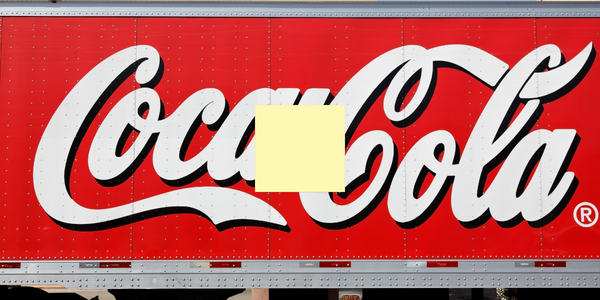下载PDF
Building smarter machines to maximize profitability
技术
- 功能应用 - 远程监控系统
- 分析与建模 - 实时分析
适用行业
- 食品与饮料
适用功能
- 离散制造
- 质量保证
用例
- 预测性维护
- 机器状态监测
- 过程控制与优化
服务
- 系统集成
- 软件设计与工程服务
挑战
Berto Coffee Roaster, a leading company in Indonesia’s food processing sector, recognized a huge opportunity in the local coffee industry and decided to focus on building high-quality coffee roasting machines. However, their existing roasting machine was manually controlled and required a skilled operator to check every step, resulting in a lot of wasted time in the production process. With the arrival of Industry 4.0, the market demanded a fully automated coffee roaster that required minimal operation and low maintenance costs while also increasing production output, quality, and consistency. It became critical for Berto Coffee Roaster to add more value to their roasting machines designed for the export market.
关于客户
Berto Industries is a leading company in Indonesia’s food processing sector. Founded by Robert Patilaya in 1984, the company started as a small manufacturing company. More than 30 years later, Robert and his son, Marcel, recognized a huge opportunity in the local coffee industry and decided to focus on building high-quality coffee roasting machines. Since 2017, they have been operating as Berto Coffee Roaster. To maintain their position as a leading local coffee roasting machine builder, they understood that they needed to continually innovate. Their journey to revolutionize the coffee processing industry led them to Schneider Electric.
解决方案
Schneider Electric integrated the Altivar Machine ATV320 variable speed drive into Berto’s roasting machine to optimize and provide automation capability. Combined with the Modicon M221 logic controller, the system became faster and more reliable, significantly improving the output quality and giving consistent and repeatable results throughout every operation. To maintain quality and production output, Schneider Electric provided better visibility into the machine’s condition and performance using EcoStruxure Machine SCADA Expert and EcoStruxure Machine Advisor. With these technologies, operational technicians can diagnose machine performance virtually and in real time, using a tablet, without having to open engine components manually. Using EcoStruxure Augmented Operator Advisor, they can conduct predictive analysis and uncover potential issues before they occur and cause expensive downtime. Schneider Electric also equipped the machines with a Magelis HMI for easier control and status viewing.
运营影响
数量效益
相关案例.

Case Study
The Kellogg Company
Kellogg keeps a close eye on its trade spend, analyzing large volumes of data and running complex simulations to predict which promotional activities will be the most effective. Kellogg needed to decrease the trade spend but its traditional relational database on premises could not keep up with the pace of demand.

Case Study
HEINEKEN Uses the Cloud to Reach 10.5 Million Consumers
For 2012 campaign, the Bond promotion, it planned to launch the campaign at the same time everywhere on the planet. That created unprecedented challenges for HEINEKEN—nowhere more so than in its technology operation. The primary digital content for the campaign was a 100-megabyte movie that had to play flawlessly for millions of viewers worldwide. After all, Bond never fails. No one was going to tolerate a technology failure that might bruise his brand.Previously, HEINEKEN had supported digital media at its outsourced datacenter. But that datacenter lacked the computing resources HEINEKEN needed, and building them—especially to support peak traffic that would total millions of simultaneous hits—would have been both time-consuming and expensive. Nor would it have provided the geographic reach that HEINEKEN needed to minimize latency worldwide.

Case Study
Energy Management System at Sugar Industry
The company wanted to use the information from the system to claim under the renewable energy certificate scheme. The benefit to the company under the renewable energy certificates is Rs 75 million a year. To enable the above, an end-to-end solution for load monitoring, consumption monitoring, online data monitoring, automatic meter data acquisition which can be exported to SAP and other applications is required.

Case Study
Coca Cola Swaziland Conco Case Study
Coco Cola Swaziland, South Africa would like to find a solution that would enable the following results: - Reduce energy consumption by 20% in one year. - Formulate a series of strategic initiatives that would enlist the commitment of corporate management and create employee awareness while helping meet departmental targets and investing in tools that assist with energy management. - Formulate a series of tactical initiatives that would optimize energy usage on the shop floor. These would include charging forklifts and running cold rooms only during off-peak periods, running the dust extractors only during working hours and basing lights and air-conditioning on someone’s presence. - Increase visibility into the factory and other processes. - Enable limited, non-intrusive control functions for certain processes.

Case Study
Temperature Monitoring for Restaurant Food Storage
When it came to implementing a solution, Mr. Nesbitt had an idea of what functionality that he wanted. Although not mandated by Health Canada, Mr. Nesbitt wanted to ensure quality control issues met the highest possible standards as part of his commitment to top-of-class food services. This wish list included an easy-to use temperature-monitoring system that could provide a visible display of the temperatures of all of his refrigerators and freezers, including historical information so that he could review the performance of his equipment. It also had to provide alert notification (but email alerts and SMS text message alerts) to alert key staff in the event that a cooling system was exceeding pre-set warning limits.

Case Study
Coca-Cola Refreshments, U.S.
Coca-Cola Refreshments owns and manages Coca-Cola branded refrigerators in retail establishments. Legacy systems were used to locate equipment information by logging onto multiple servers which took up to 8 hours to update information on 30-40 units. The company had no overall visibility into equipment status or maintenance history.





